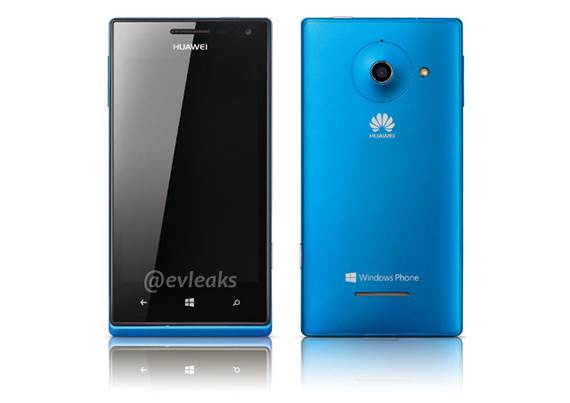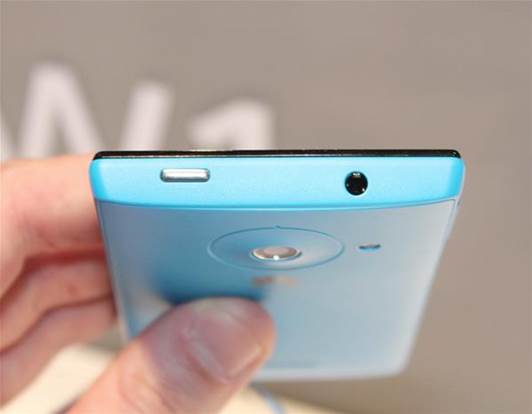This is the company’s first WP8 device which
is promising but flawed.
When Microsoft proclaimed its hardware
partners for Windows Phone 8, we were surprised that Huawei was not mentioned.
You know, in the period before the event, we had seen enough evidence to be
sure that Chinese company would become the fourth phone manufacturer to take
part in with Nokia, Samsung and HTC. When the Ascend W1 was released late at
CES, Huawei did not try to explain the delay, but with the intense political
opposition it is currently confronting in the United States, perhaps the
company tried to avoid. Now, after several months, we have the first
opportunity to test the Ascend W1, its first Windows Phone 8 phone.

This
is the company’s first WP8 device is promising, but it is flawed.
With a $198 off-contract price on the O2
network in the UK (or $230 at Walmart in the US) and a technical specifications
sheet of the year 2011, Huawei is clearly aiming this device at the same
customers as the lowest-priced Lumia series of Nokia, such as the 520 and 620.
This puts it in the reach of the new smartphone users who are the "price
sensitive" and those who want to try the Windows Phone as a secondary
phone. But should the W1 be the device that new users select to be their
starting point into Microsoft's mobile world, or will we say again that the
Lumia 620 is worth spending your hard-earned cash? The answer lies below.
Hardware

Regardless
of being eight grams heavier than the iPhone 5, the Ascend W1 feels lighter in
hand.
Regardless of being eight grams heavier
than the iPhone 5, the Ascend W1 feels lighter in hand. The cheap-priced
devices are generally going to make you worry about poor build quality, but
Huawei appears to evade these problems quite easily. In fact, the W1 is
sturdily built and resisted our efforts to distort its shape with bare fingers.
In short, it will withstand the dangers of a jeans pocket fairly well.
The company has imitated Nokia and HTC,
coating the device in a matte cyan (or pink) polycarbonate shell. Those of you
who remember the original Android devices of HTC will also pay attention to
signs of a chin here, but since the screen is mounted on the shell like a
pedestal, it is quite nice. With the width of 2.5 inches and the thickness of
0.4 inch, you might expect it not to fit in your palm, but fortunately the
edges and corners have been rounded off. Therefore, while the phone may seem to
be rigid and square, it is extremely comfortable in the hand.
On the 4-inch WVGA screen, which we will
discuss later are the earpiece, proximity sensor, battery indicator light and a
front-facing VGA camera. Beneath the screen, you have the normal three
capacitive buttons, with the microphone engraved into the edge of the bezel on
the left side of the Windows key. Along the chassis, you will find a 3.5mm
headphone port and the power / sleep button at the top, two-stage camera key on
the right side, a volume rocker on the left side and a micro-USB port at the
bottom.

Along
the chassis, you will find a 3.5mm headphone port and the power / sleep button
at the top.
The company could have taken some notes on
where to layout the phone’s loudspeaker. Instead of lying on the rim or the
front of the chassis, the speaker grille runs under the Windows Phone logo on
the back of the case. That means that if you are hands-free calling, or
annoying the passengers on the subway, you will have to keep the phone away
from your palm or mute the sound - an issue we have also found on the basic and
mid-range Lumia series like the 520, 620 and 720.
The rear cover is detached to reveal a
removable 1,950mAh battery, microSD card and SIM slot - so please keep the
micro-SIM adapter nearby. While the phone has 4GB of storage, Windows Phone
takes up more than half of that number, leaving us with only a 1.88GB of useful
memory. Do not be fooled by the bargain price if you are going to intend to
load media onto the device, since your first task will have to buy a microSD
card (up to 32GB) separately.
Screen

On
the positive side, the IPS LCD screen of the W1 delivers great viewing angles
and is evenly illuminated.
We have often repeated that the block-color
aesthetic principle of Windows Phone denies some of the need for a pixel-rich
screen. Thus, you should not be surprised to read that the 4-inch WVGA
(800x480) screen of the W1 does not impress us much, but it does a superb job
when based on the price of the phone. Granted, it will not beat a high-end
phone, but those who are upgrading from the feature phones will not see many
reasons to complain. When it comes to the video playback, that 233ppi screen
works well, and we were able to be satisfied when using it to watch 30-minute
TV programs during a commute.
On the positive side, the IPS LCD screen of
the W1 delivers great viewing angles and is evenly illuminated. Huawei may have
saved pennies elsewhere, but at least here it employed OGS (One Glass Solution)
to eliminate the air gap between the screen and the protective glass to have a
sharper, more vivid display. In reality, we will say that color reproduction is
good, but there is a problem.
Of course, the problem is that the W1’s
backlight should have been much stronger, because we had to set the screen to
maximum brightness even when indoors. When venturing out, we certainly had
spinal injuries since we had to crane over the phone, attempting to shade it
from the mid-day sun. Granted, that is not a unique problem for any LCD, but
trying to capture images and shoot video has led to many pointing and hoping
actions that we had taken a rather nice image.